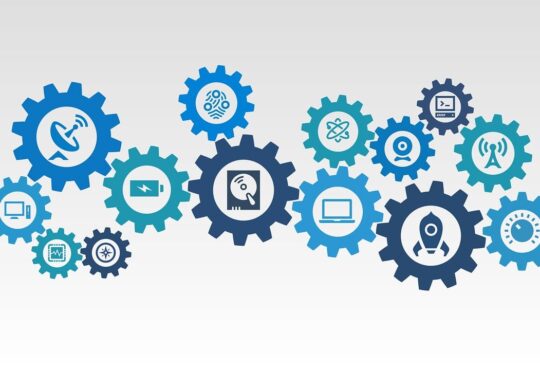
This article talks about understanding how business is looking at connecting to players and how banks are working towards getting some of the ones going.
Standard Chartered operates in 60-plus countries. From a consumer perspective, we operate in around 2425 countries across Africa, Asia, and the Middle East. That’s how we have structured ourselves.
We are all living in a new era of disruption. We are seeing industry players embracing technology, capabilities, and enhanced user experiences, to transform business models today. We’ve seen companies like Uber, Grab, and Ola that don’t own any vehicles, but they all give that experience back to the clients or customers. Similarly, Alibaba, Sharpie, and Flipkart have no inventory, but they have created this entire most valuable retailer.
Similarly, we are looking at finance, where the discussion is still on. With Web 3.0, and Crypto blockchain, we can see disruption happening in that space in a few years. But for us, formulation for success has always been innovation and technology. Technology means modularity, APIs, user experience, convenience, generation shift, and access anywhere. And all this is possible today because of technology. And because we’re able to connect better, we can share and bring in better security features. So it becomes easier for clients and customers to feel safer when interacting with third parties outside their domains.
We have seen this disruption in consumer lending, payments, Wealth Management, and small business lending deposits across continents.
Launchpad for open data ecosystem for finance
We all know how open data ecosystems and the broad adoption of open data ecosystems boost the economy.
For example, the India digital stack is being built today with an identity layer at the bottom, a payments layer at the middle, and the entire open finance stack on top.
In Asia, where we have large populations, you have either underbanked or unbanked segments. How do we tap into this market using technology with different players to connect, share, and get more insights?
There are a lot of opportunities there. This is not only for individuals. Small businesses, mom and pop shops don’t get finance. So, if we tap them, it will improve the economy.
In this evolving and fast-paced digital landscape, headlines worldwide have squarely placed trust, data protection, privacy, and risk of unauthorized data sharing or misuse in the limelight.
Data governance is a global challenge. Government can serve as an open-data provider, catalyst, user, and policy maker to create value and mitigate risks.
Take India as an example, where there’s a lot of change, specifically in digital adoption. We’ve seen smartphone users rapidly increase in the last three to four years. Banking is becoming more digital as COVID set in the last two years. How do we then cater to all these audiences? How does open financial data put control back in the hands of the customer and give organizations the power to offer innovative and better financial products? How do we orchestrate the shift to empower individuals with data requests? All this can happen through an open API framework. That’s what a lot of governments are doing. You have Singapore, which is bringing in FINDEX, an open data, open API platform which empowers the customers. It is all designed with the customer at the forefront. A Data Exchange is being built for non-individual small businesses. In Hong Kong, they’re rolling out open APIs for everything, from inquiries to transactions for financial products. They are looking at a commercial data interchange, which is open APIs for small businesses, connecting small businesses with large FinTech players like Alipay, etc.
How do they bring that ecosystem together? They do two things. One is offering banking or financial products to unbanked and underbanked. Then, empower individuals and customers in the middle. Empower them in terms of giving consent and withdrawing consent. There are legal, legal-techno frameworks that are being built. A lot of that is happening in the backend. On the front end, we can do an open API framework and empower individuals regarding financial inclusion.
Resolving this challenge: India
Data empowerment and protection architecture (DEPA) is a new Indian data governance model. A paradigm shift to individual data empowerment, economic recovery and growth, and competitive data democracy. Data is used to empower a billion Indians rather than advertise and sell products. Data is being made individual-centric rather than organization-centric.
How do we empower individuals?
There are many issues around this open data ecosystem. It can be on data rights and data protection. How do I incentivize people to share data in a more controlled framework? How do we manage the usage of data in an open data system? How do we have informed consent regarding how much time you can give for this consent? How do you have an open, shared infrastructure where we can bring organizations together? These are some of the challenges we face organizationally.
Data empowerment will be a transformative platform quite distinct from other models worldwide.
Data empowerment today is an open data ecosystem that transcends countries. You have a data empowerment framework in India, a GDPR in Europe, etc.
There are areas where we think these policies, legal techno frameworks, or open data systems are more evolved. It’s based on the principle of data ownership, individual rights, and consent framework.
Many markets still have not resolved ways to empower individuals and small businesses to ensure the consent framework exists. How do you have a consent manager to manage some of this without compromising data privacy, etc.? How do we roll out the entire technology framework? How do we have more open technology and open protocols to do it?
There are Institutes like Open Data Institute based out of London, which study how this open data ecosystem and the open API framework can help different countries and how we standardize some of these protocols? How we then customize each of these protocols becomes very complex as we transition into a more open data ecosystem.
Impacting the economy through individuals and SMEs
- Open public infrastructure, like an account aggregator model, transfers data ownership to customers, which drives scalability, but limits profitability. That is what banks are looking at, saying how we improve profitability by bringing more products into an open public infrastructure.
- Strengthen the foundation for consumer data protection and security before broader adoption. Because you have a more modular setup in terms of technology, you have APIs, which can be more open today, and people are willing to share data. It is always a challenge, but people are willing to share data.
- Power up embedded financial services offerings to MSMEs in Payments, Insurance, Lending products, etc.
- Boost digital-native financial services institutions to leverage open data and infrastructure to offer efficient and fast financial intermediation to MSMEs.
- Accelerating access to financial products for individual customers.
- Transformation towards an open economy. We started with closed banking, which had controlled access to data, and only a subset of organizations and individuals had access to that. It was more of an organization-centric, closed environment. Now we are moving into open banking, where people can share account information. Payments are becoming more open. Your open API is being rolled out in many markets in Asia, of course in Europe. So we’ve seen that happening. We will get into open finance, which has more open innovation and more open assets. Next is getting into the open economy, which is what we’re looking at in three to five years, which has more open data. You have open business models, embedded finance, super apps, and talent sharing. There is experience sharing, including customer experience.
So we think that finance, healthcare, telecom, transportation, pro-consumer products, and education will see a more open economy as we transit and are open to sharing data. We have more modular technology to manage all that. We are creating a layer to connect to using APIs and creating catalogs. We are becoming more open to partnerships to acquire more customers, service customers better, and give more options and products to our customers.
It will take us some time because, as a bank, we are a regulated entity. You have fintechs, who are not so regulated, but we need to partner with them so that we can learn how they operate and how we can collaborate. It makes it faster, cheaper and more cost-effective for them to integrate, and APIs drive that openness in how data is shared.
Open data and sharing of data are more open because that’s becoming a reality as we go into the next two or three years. We still have challenges –
- Identity markets are not democratized.
- Leveraging all the data that is available today. How much of the data can be used? How much data can be used to build advanced underwriting and cross-sell models? How do we make it easier for banks to access this data and build advanced models so that we can differentiate customers and give them differentiated products and propositions?
We need to build security around how this entire thing will operate regarding sharing. A lot of investment is required to create the security layer, advanced cybersecurity, and protection for the banks. That brings more trust for consumers to start sharing information about what they have. For example, India has created this open data ecosystem. They started with the identity layer; they created the payments layer, which is now one of the largest providers at free cost. Now the Indian ecosystem is looking at how do you empower using account aggregators? They are looking at an open credit enablement network, which can bring in open finance to many individuals who don’t have access to financial products, especially access to loans, lending, etc. This is both for individuals and annotators. So we need to build a scalable API infrastructure. And this is for banks and organizations. Between open APIs cloud, we think we can offer innovative products that cater to a larger population. We can bring in a lot of people who are unbanked and underbanked more into the banking world or in the finance world.









